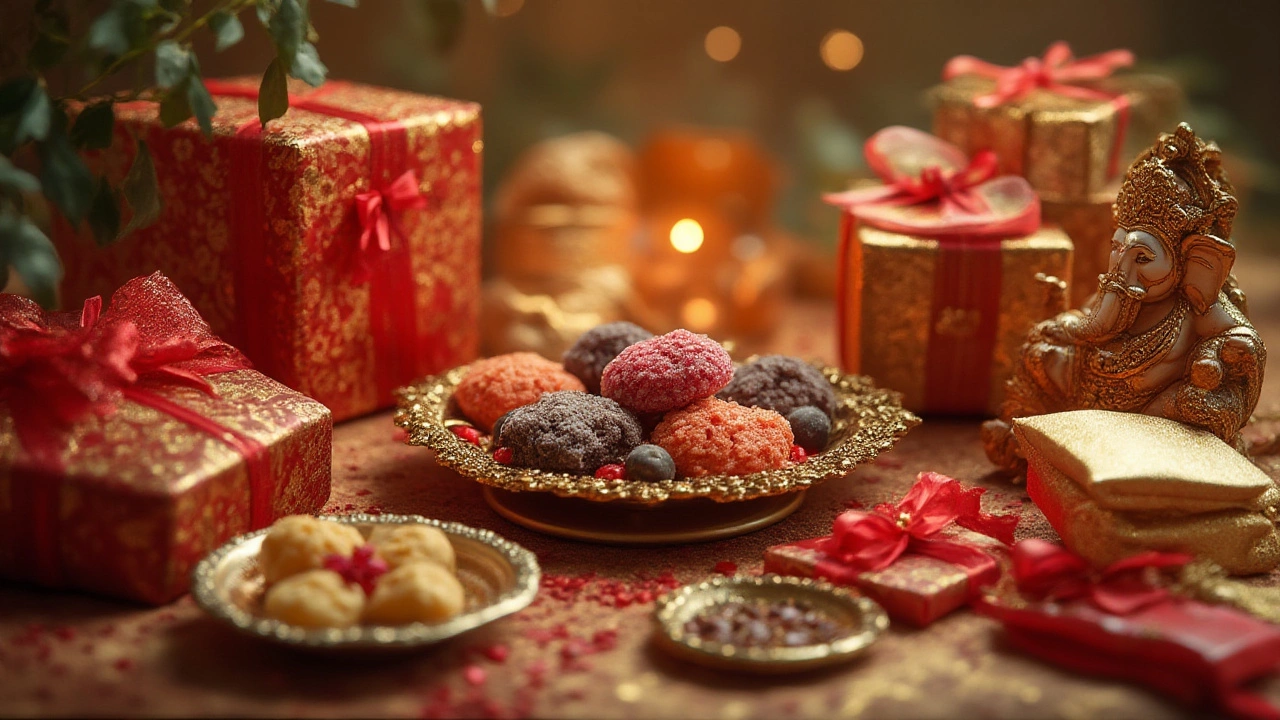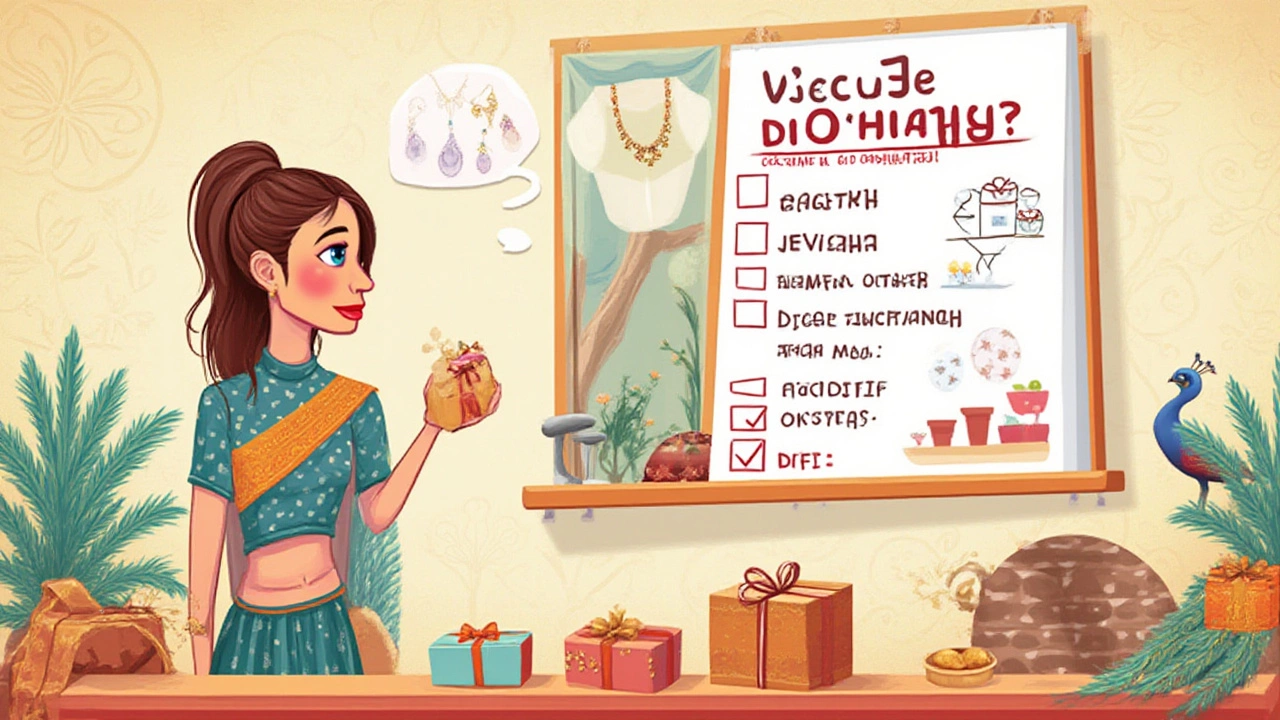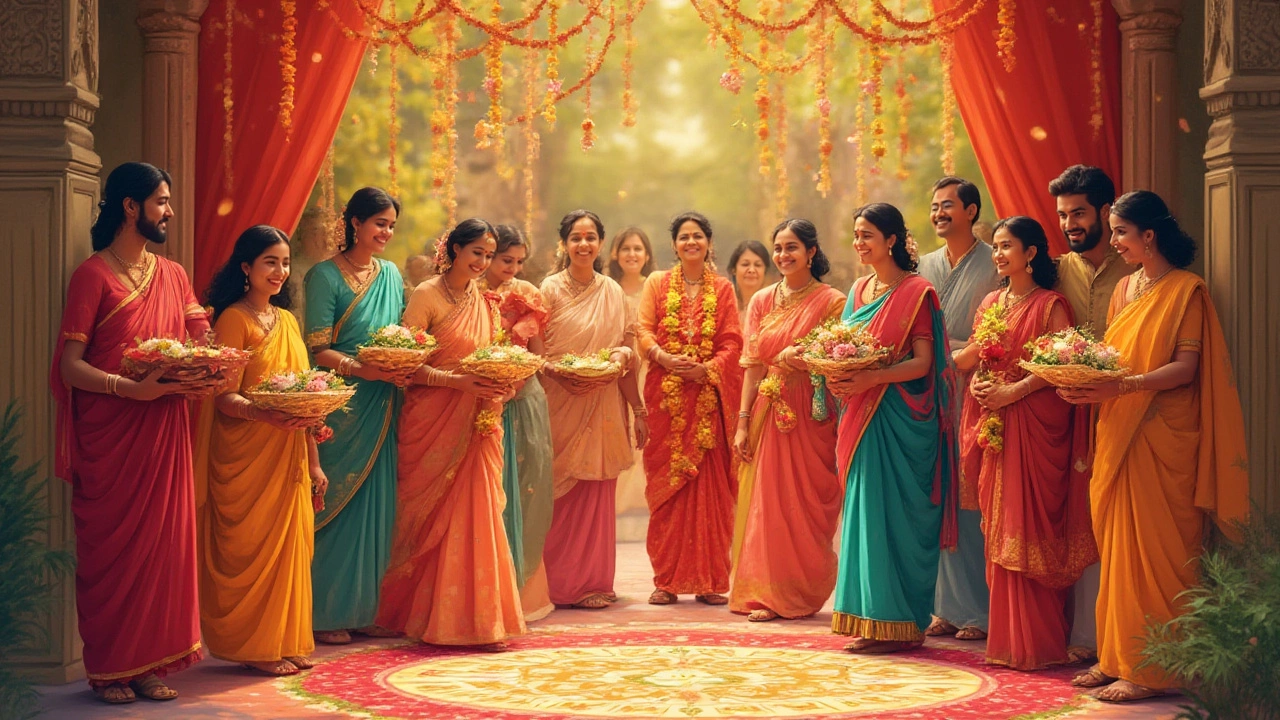A spectacular rainbow of outfits floods the venue. Henna patterns snake up every hand. The aroma of cardamom, ghee, and marigold fills the air. Indian weddings are infamous for their energy, ritual, and hospitality—but if you’ve snagged an invite and you’re not sure whether to bring a gift (or what to bring), you’re definitely not alone. At some Indian weddings, guests turn up with wraps of cash. At others, nobody brings anything, and gifts appear weeks later at a family lunch instead. The truth: there’s no single rule that fits every region, religion, or social circle in India. Gift-giving is loaded with meaning, but also a bit of confusion for many guests.
The Tradition Behind Indian Wedding Gifts
Centuries back, weddings across India weren’t just about two people tying the knot—they were major social alliances. Families exchanged elaborate gifts: gold for the bride, precious silks, or even livestock in a few communities. Fast forward to modern India, and while goats aren’t a typical gift anymore, that spirit of generosity remains. In North India, gifting is almost non-negotiable; folks hand over money in decorative envelopes called 'shagun.' In parts of South India, the couple might get silver utensils, luxurious fabrics, or even coconuts (symbolizing fertility and good luck). Sometimes, these traditions are deeply tied to local beliefs or religion—Hindus, Muslims, Sikhs, and Christians each have their unique customs, even within the same city.
Here’s a fun fact: Indian weddings are so big that according to The Times of India, the wedding industry in 2020 was valued at 3 lakh crore rupees (about $40 billion USD), putting it just behind the US. Much of that goes to hospitality, but the portion spent on gifts isn’t small. Families sometimes invest up to 10% of their wedding budget in exchanging presents with relatives and guests. Some communities, like Marwaris and Gujaratis, plan entire functions called 'Mehendi' or 'Sangeet' centered on gifting attire or jewelry.
While older generations often prefer practical or auspicious gifts, new-age couples sometimes register for gifts just like their Western counterparts. According to a 2023 survey from WedMeGood, about a quarter of urban Indian couples now provide a wishlist or registry, often for home appliances or travel vouchers, to make it easier for friends and colleagues. But outside of major metros, the classic cash envelope and symbolic objects remain the gold standard.
Do You Really Need to Bring a Gift?
This is the million-dollar question. The short answer: unless the invitation says “No Gifts Please,” it’s always polite to bring something. But the type of gift can shift depending on your relationship with the couple, your regional background, and even the scale of the celebration. If you’re a close family member or old friend, you’re probably expected to give something thoughtful and valuable. For distant acquaintances or colleagues, a smaller but considerate gift will be fine. And if you barely know the couple, cash in a bright envelope is safest—you’ll see almost everyone do it.
Unlike some Western cultures where opening presents in front of everyone is common, Indian couples often receive gifts discreetly, sometimes after the wedding or even via courier if logistics get complicated. This is why, in Indian weddings, timing doesn’t always matter—bringing a box of sweets during a post-wedding home visit counts as a perfectly acceptable gesture. Gifting on arrival is more popular in North Indian weddings, but it’s never the main attraction. Food, music, and dancing usually take center stage.
The envelope tradition carries serious meaning. In most Hindu and Sikh cultures, you’ll find that cash gifts usually end with a “1”—so instead of giving 1,000 rupees, people slip in 1,001. This little one-rupee coin is believed to bring prosperity and signal that the gift’s blessings will continue. Superstitious? Maybe, but it adds a whole new level of charm. And if you’re ever unsure, ask the couple or their close family. Nobody gets offended by a polite question. The very fact you’ve asked reflects thoughtfulness—a value Indian hosts secretly love.

Popular and Thoughtful Gift Ideas
If you’re racking your brain over gift choices, here’s a cheat sheet. Cash remains king for most Indian weddings—hand it over in a decorative envelope from a local stationary shop, or a gold-embossed 'shagun' pouch you can spot in every Indian city. If you want to branch out, gold coins (even tiny ones), silver utensils, and home appliances have stood the test of time. But what if the couple is millennial, secular, or just very global in their lifestyle? Then gifts like a cookbook set, personalized luggage tags for their honeymoon, high-quality cutlery, or even a plant (for indoor décor enthusiasts) work brilliantly.
- If you’re attending a Bengali wedding, consider bringing sarees, sherwanis, or boxes of premium Bengali sweets like sandesh and rosogolla—these are a huge hit there.
- For South Indian couples, silver pooja thalis (prayer plates), brass lamps, or Mysore silk stoles are common. Even a coconut wrapped in a red cloth is believed to bring luck.
- Panjabi or Sikh weddings tend to appreciate gold or silver jewelry, or even digital gift cards now that so many celebrations are semi-virtual.
- Don’t bring leather goods if you know the couple is strictly vegetarian or follows Jain or Brahmin traditions—this is considered inauspicious.
- Never bring clocks or handkerchiefs—these are taboos in some regions, symbolizing “counting the time left” or goodbyes.
Some guests split up with a collective gift—pooling funds among a friend group to buy something truly memorable, like a high-end mixer, a custom painting, or a weekend getaway voucher. And if the couple is international, digital cash transfers, experience vouchers (for example, gourmet dining), or donations to their favorite charity in their name have started catching on.
Modern Twists: Wishlists, Registries, and Practicality
Indian wedding norms are shifting as young couples blend tradition and practicality. Wishlists or gift registries—once unthinkable—are now popping up in urban circles. Around Mumbai, Delhi, and Bangalore, it’s common for an invitation to include a QR code leading straight to a registry page. Here’s the real surprise: elders often find this quite handy, since they can avoid the stress of guessing the couple’s taste or needs. Some retailers offer packages especially for weddings, combining gifts (blenders, silk throws, spa vouchers) into sets that guests can purchase with two clicks.
The modern crowd—especially college friends and colleagues—leans toward cashless apps like UPI, Paytm, or even Venmo. If you’re going digital, check with the couple or a family member; not every parent is comfortable with online transfers as gifts (although Gen Z certainly is). Couples today often skip elaborate wedding favors for guests, instead donating the budget to charity, planting trees, or simply prioritizing an epic after-party.
Practicality runs deep in these choices. Instead of sets of dinner plates that will gather dust, couples now want gifts they’ll use daily or remember forever. High-end bedding, coffee makers, or bookings for a dream staycation are safer than another crystal vase. Experience gifts—wine tastings, pottery classes, gourmet dinners—are also on the rise, echoing trends in the US and Europe.
Family dynamics play a big part too. In joint families, gifts are sometimes coordinated by elders who want to show off social stature, while young couples focused on utility usually guide guests toward a registry or cash. If you aren’t sure, scan the wedding invite—they might print specific instructions or even set up a wedding website. And if you space on the gift entirely, showing up with your best dance moves, a warm hug, and a heartfelt card still counts—sometimes more than any fancy present.

Indian Wedding Gift Etiquette Tips
The unwritten rules matter as much as the actual gifts. In most circles, hand over your gift discreetly, preferably to a close family member who will stash it for safekeeping. In some South Indian communities, gifts and money are not presented at the wedding but at a special meet-and-greet later. If you only attend the reception (not the ceremony), a smaller gift or just a congratulatory card is acceptable, though a cash envelope remains most common.
Timing also changes with location: in parts of North India, gifts are given as soon as you arrive; in the South or East, guests often wait for a calm moment. Remember to write your name and a brief, warm wish on the gift or envelope—so nobody has to play detective later. If you’ve chosen a wrapped present, avoid black or white paper (these colors are considered unlucky at weddings in India—gold, red, or yellow are always safe bets).
Here's a quick data snapshot of wedding gift trends in India based on a 2024 survey:
| Gift Type | Popularity (%) |
|---|---|
| Cash Envelopes | 57 |
| Jewelry/Silverware | 17 |
| Home Appliances | 13 |
| Gift Vouchers | 8 |
| Personalized Gifts | 5 |
What about the amount? There’s no magic number. People often match the value to their bonds with the couple, the lavishness of the wedding, or simply what’s comfortable for their own budget—anywhere from 500 rupees for acquaintances up to 20,000 rupees and beyond for close family. The old rule of thumb still wins: give what you’d like to receive, or what would make you smile if you were on the receiving end.
And those nervous about missteps: don’t worry. Nearly everyone remembers the laughter on the dance floor more than the gift itself. Still, honoring even a single local tradition—like that extra one-rupee coin—shows you cared enough to try. Stick with Indian wedding gifts that feel genuine, wrap them up with a wish, and soak up the colors and chaos. At an Indian wedding, that’s what’s truly treasured in the end.
